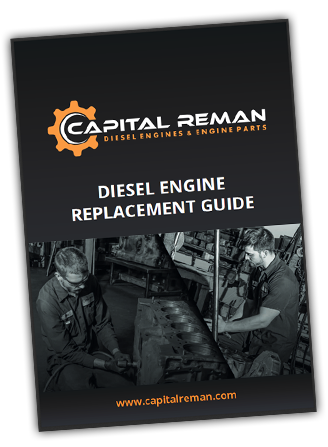OEM vs. Aftermarket Parts: Are They Really Better?
 In the automotive industry there are really two options when it comes replacement parts: OEM and Aftermarket Parts. We all know those guys that are die hard OEM people. They will swear to their dying day that OEM parts are vastly superior to their Aftermarket counter parts. They tell tales of “that one time” they got a sensor, gasket or O-Ring from a local auto parts supplier that didn’t fit quite right or failed right away. Expletives fly from their mouth at a rate of 1000 exploding suns as they go on and on about the horrible ordeal and cost them bookoo bucks. That’s all fine and well but what is the real truth?
In the automotive industry there are really two options when it comes replacement parts: OEM and Aftermarket Parts. We all know those guys that are die hard OEM people. They will swear to their dying day that OEM parts are vastly superior to their Aftermarket counter parts. They tell tales of “that one time” they got a sensor, gasket or O-Ring from a local auto parts supplier that didn’t fit quite right or failed right away. Expletives fly from their mouth at a rate of 1000 exploding suns as they go on and on about the horrible ordeal and cost them bookoo bucks. That’s all fine and well but what is the real truth?
Hersey can be dangerous. Typically, these stories are from the same guys who tell tales of fish they caught that were as big as a house and that they once dated a super model. Either everything is either larger than life or more horrible than trying to give a crocodile a root canal. The real truth is that the girl they once dated was the one that was as big as a house and the aftermarket part they bought was actually installed in an engine that was 47 years old; oh and by the way hadn’t had the oil changed in since the Reagan Administration.
To put this argument to rest once and for all let’s look at the facts regarding the OEM and Aftermarket parts industry.
OEM Parts Analysis:
OEM stands for Original Equipment Manufacturer which means the parts are directly made by the engine manufacturer in their facilities, not a third party manufacturer or subsidiary of the engine manufacturer.
PROS:
- Supposed Quality Assurance: The OEM part is an exact replacement to what was originally in the engine. The fit is 100% guaranteed to be perfect and the peace of mind knowing the part will work as directed is guaranteed.
- Easy Parts Selection Process: There is no guess work to determine what part matches the one needed. One process, one parts software selection system and one simplified sales process.
- Manufacturer Warranty: OEM parts usually come with an unlimited miles 1 year warranty which is usually passed on by repair facilities.
CONS:
 Extremely Expensive: OEM parts are, on average, 65% more expensive than Aftermarket parts. The Dealership model has always increased profits by charging a premium on warranties, service and parts. In fact, recently Caterpillar has pushed its dealers to sell more parts and preventative maintenance services. Many new machines come equipped with expensive computers and sensors which monitor the health of the entire system… but they also breakdown more easily. More repairs mean more $$$ for the dealers.
Extremely Expensive: OEM parts are, on average, 65% more expensive than Aftermarket parts. The Dealership model has always increased profits by charging a premium on warranties, service and parts. In fact, recently Caterpillar has pushed its dealers to sell more parts and preventative maintenance services. Many new machines come equipped with expensive computers and sensors which monitor the health of the entire system… but they also breakdown more easily. More repairs mean more $$$ for the dealers.- Limited Places to Purchase: OEM parts can be bought on the secondary market in places such as eBay, Craigslist, or through salvage or reman facilities. However, the vast majority of consumers go to the dealer to purchase OEM parts due to availability. Machine shops and mechanics can purchase OEM parts but the process includes a substantial markup and additional time to order the parts.
- Questions of Superior Quality: The only reason to buy OEM parts is the peace of mind you get from receiving a part that is guaranteed to fit 100% of the time. However, many studies (discussed further in this article) have determined that the quality of the OEM vs. Aftermarket parts is minimal or none at all. Many aftermarket suppliers have also improved upon original OEM designs to produce a better quality product.
Aftermarket Parts Analysis:
Aftermarket parts are classified as parts that are manufactured by a third party company not affiliated with the original engine manufacturer.
PROS:
 Cost Savings: The savings the consumer receives varies from brand to brand but overall the amount is significant. On average 65%. If the price seems too good to be true it probably is. The major aftermarket manufacturers are all ISO 9001 level facilities and have been around for 50+ years. It pays to do your homework instead of buying something randomly off the internet.
Cost Savings: The savings the consumer receives varies from brand to brand but overall the amount is significant. On average 65%. If the price seems too good to be true it probably is. The major aftermarket manufacturers are all ISO 9001 level facilities and have been around for 50+ years. It pays to do your homework instead of buying something randomly off the internet.- Equal or Great Quality Than OEM: The quality of aftermarket parts has gone up significantly in just the past 10 years. There are thousands of aftermarket parts companies and the very best ones reverse-engineer the OEM design. Many times these companies will improve on the original design to make the part more efficient, stronger or fit better.
- Greater Selection: Since there are thousands of aftermarket suppliers you can find multiple vendors that make different variations of the same part. More vendors means a better variety of prices and models.
- Greater Convenience: The issue with dealing with OEM parts is that you are on the dealer’s time. Most often the dealer is going to have to order the part from a central warehouse. Aftermarket companies like NAPA and O’Riley have millions of parts right there in one location.
CONS:
- Quality Variations: The vast majority of aftermarket suppliers produce excellent quality products. However, since there are thousands of suppliers there are bound to be some of lower quality manufacturers. It pays to do your homework to determine who the major players are in the aftermarket industry. If a deal seems too good to be true it probably is.
- Limited Warranties: Depending on the aftermarket company some may not come with a warranty to keep costs down. Others offer limited short term warranties. However, all of the big name companies tend to offer at least a 1 year warranty.
- Overwhelming Selection: With so many aftermarket parts to choose from it can be quite overwhelming to come to a decision on what is the best part for your particular need. With OEM you know the part number and you get an exact replacement. Slight variations and improvements in design can make the selection process difficult.
Legal Research and Court Cases
 Does it really matter whether you use aftermarket or OEM parts? Will it affect the appraised value of the car or piece of equipment?
Does it really matter whether you use aftermarket or OEM parts? Will it affect the appraised value of the car or piece of equipment?
The answer is yes and no. A vehicle involved in an accident can be valued lower than one never damaged especially if there is overall structural loss, chassis damage or if the airbag deployed. That being said the parts used to make the repairs to the vehicle or engine will not have any impact on the resale value. There are two major court cases from IIHS (Insurance Institute for Highway Safety) regarding OEM vs. Aftermarket Parts.
State Farm Ruling
The insurance industry as well as many in the automotive sector believe Aftermarket and OEM parts are of the same quality. The country's largest auto insurer, State Farm, officially states that Non-OEM parts (Aftermarket) are equal to OEM parts. The use of aftermarket parts in vehicle replacements results in a savings in claims payouts that are then passed on to the customer. State Farm cites various crash tests by the IIHS in which non-OEM parts were found to perform equally or better than OEM parts.
State Farm also instituted blind tests to see if repair shops across the country could determine if there was a difference between OEM and Aftermarket Parts. According to the study an overwhelming number of repair facilities could not tell any significant difference between OEM and Aftermarket Parts. The test included a visual inspection as well as a post installation inspection. After the conclusion of the testing, State Farm, as well as other insurance and automotive manufacturers, created the Certified Automotive Parts Association (CAPA) as a non-biased organization to test the quality of Aftermarket Parts for the automotive industry. CAPA now provides millions of reviews, pricing and quality assurance information for the consumer on aftermarket auto parts.
IIHS Studies
The debate between OEM and Aftermarket Parts was first formally discussed by top industry organizations in the early 1980s. The Insurance Institute for Highway Safety (IIHS) is first and foremost concerned  with consumer safety and is not affiliated with any automotive manufacturer. In 1987 the IIHS performed its first tests on Aftermarket Parts to determine the safety of Non-OEM parts. The IIHS performed two major aftermarket parts tests: the first one compared an OEM and Aftermarket hood in a 30 mph crash with a head on frontal barricade. The results of the tests determined that the Aftermarket Hood met all safety standards and reacted just like the OEM hood did.
with consumer safety and is not affiliated with any automotive manufacturer. In 1987 the IIHS performed its first tests on Aftermarket Parts to determine the safety of Non-OEM parts. The IIHS performed two major aftermarket parts tests: the first one compared an OEM and Aftermarket hood in a 30 mph crash with a head on frontal barricade. The results of the tests determined that the Aftermarket Hood met all safety standards and reacted just like the OEM hood did.
The second IIHS test was performed in 1999 which compared two off-set frontal crashes at 40 miles per hour. An off-set crash basically consists of two cars “clipping” one another where the front driver side hits head on with another car’s front drivers side. The study tested OEM and Aftermarket hoods and front bumpers. The results of the test were the same as the one performed in 1987… there was no significant difference between the OEM and Aftermarket models.
NAII Studies
The National Association of Independent Insurers (NAII) has studied the OEM vs. Aftermarket issue closely since 1995. The year 1995 was the first year multiple state legislators introduced bills forcing requirements, on to insurers, regarding Aftermarket parts. In 1999, 25 state bills were introduced, 18 in 2000 and 18 in the year 2001. Not one of the bills introduced and was ratified into law. On a federal level, the United States Department of Transportation has not found any safety hazards concerning the structural integrity of aftermarket parts. Of the millions of aftermarket parts on the market, there have been zero national recalls on Non-OEM parts in this country’s history. Not to say there have not been recalls of aftermarket parts however none have been structurally unsafe and warranted a national emergency. All parts, whether OEM or Aftermarket, must meet the guidelines of The National Traffic and Motor Vehicle Safety Act which was enacted in 1966 by President Lyndon Johnson. From an insurance standpoint most states do indeed have laws that require insurance companies to disclose if they use Aftermarket parts in vehicle claims but don't require any specific manufacturer.
Illinois Court Ruling
Over the years there have been numerous legal battles fought over the issue of Aftermarket vs. OEM Parts. There have also been cases regarding the quality of recycled, refurbished or used parts. However, the law is more lenient, as the assumption is that the buyer is aware going into the transaction that the "automotive part or used diesel engine" is not brand new. The two most famous Aftermarket cases are the Illinois and Texas Court Decisions.
The most famous court case was Avery et al v State Farm in 2001 and ending in 2005. The class action lawsuit involved Policyholders of State Farm vs. State Farm Corporation regarding the quality of Aftermarket Parts in replacement vehicles. Policyholders argued that Non-OEM parts are inferior to OEM parts and thus unable to return a damaged vehicle to pre-accident condition as stated by State Farm’s auto policy. The plaintiff presented evidence from body shops and those in the auto parts industry stating that Aftermarket Parts are inferior to OEM Parts in shape, corrosion resistance, finish and quality. Attorneys stated that albeit Aftermarket Parts might be of similar structural integrity to OEM Parts, that oftentimes they are not galvanized properly to stand up to long-term corrosion which could lead to future safety concerns.
State Farm’s attorneys maintained a stance that Aftermarket Parts are in no way inferior to OEM Parts stating IIHS studies, a track record of zero national safety recalls and overall policyholder satisfaction numbers.
The original ruling was in favor of the policyholders for $1.05 billion judgement. However, in 2005 the ruling was overturned at the Illinois State Supreme Court. The $600 million in punitive damages as well as the $457 million award was reversed in favor of State Farm citing that corrosive evidence was anecdotal in nature and not widespread across the Aftermarket Parts industry as a whole.
Texas Court Ruling
 The other large OEM vs. Aftermarket case occurred in the State of Texas. The 2000 case entitled Berry v State Farm Mutual Automobile Insurance stated the insurer violated the Texas Insurance Code by denying to cover the costs of OEM parts replacement. State Farm argued that Aftermarket Parts are essentially same parts, restored the vehicle to OEM condition and were not in violation of any insurance code (particularly 5.07.1). The policyholder’s main argument was that Aftermarket Parts are manufactured to slightly different specification and did not perfectly fit the vehicles they were intended for. They also argued that aftermarket parts are more likely to rust due to insufficient priming protection and that Non-OEM parts can void the manufacturer’s warranty thus reducing the resale value.
The other large OEM vs. Aftermarket case occurred in the State of Texas. The 2000 case entitled Berry v State Farm Mutual Automobile Insurance stated the insurer violated the Texas Insurance Code by denying to cover the costs of OEM parts replacement. State Farm argued that Aftermarket Parts are essentially same parts, restored the vehicle to OEM condition and were not in violation of any insurance code (particularly 5.07.1). The policyholder’s main argument was that Aftermarket Parts are manufactured to slightly different specification and did not perfectly fit the vehicles they were intended for. They also argued that aftermarket parts are more likely to rust due to insufficient priming protection and that Non-OEM parts can void the manufacturer’s warranty thus reducing the resale value.
The defense team for State Farm countered the prosecution’s claims citing a 1996 memo from the Texas Department of Insurance (Governing Body of Insurance Related Matters in Texas) concerning the issue. The Texas Department of Insurance interpreted article 5.07.1of the Texas Insurance Code as not having to “enforce extreme circumstances”. In layman’s terms, the Texas Department of Insurance does not believe in forcing insurers to provide OEM parts nor allowing the insurer to specify the types of parts the consumer has to choose in a replacement vehicle. The Texas Department of Insurance stated that the use of aftermarket parts actually benefits the consumer by saving them millions of dollars each year in lower insurance premiums. The Texas appellate court was sympathetic to the concerns of the policyholder but found it to be illogical to require OEM parts in every auto insurance claim regardless of age or working condition of the vehicle. Such obligations would be costly to the insurer and the policyholders in the long run. The court ruled in favor of State Farm and found that no contractual violation of article 5.07.1 had occurred. However the court did not make a ruling whether or not Aftermarket Parts were any different to OEM parts in terms of quality, corrosiveness resistance or compatible size.
International Standards Organization: (ISO Certification of Factories)
 Many of the pre-conceived notions about Aftermarket Parts come from years of less than optimal quality standards from 1980-2000. Today, in 2016, things are much different. The vast majority of aftermarket parts are manufactured overseas. That doesn’t mean the quality is junk. In fact most parts are made in facilities that rival those in the United States. Factories are ISO-9001 level production facilities. International Standards Organization (ISO 9000 level) of certification was first created in 1987 and is based on the BS 5750 series of production standards which were first proposed in 1979. However, production standards and certifications can be traced back to 1959 with the creation of MIL-Q-9858 standards with the United States Department of Defense. The international community created the ISO to help level the playing field for companies worldwide interested in becoming the best at manufacturing and streamlining processes. ISO standards also benefit the consumer by adding a layer of advocacy to protect uninformed customers.
Many of the pre-conceived notions about Aftermarket Parts come from years of less than optimal quality standards from 1980-2000. Today, in 2016, things are much different. The vast majority of aftermarket parts are manufactured overseas. That doesn’t mean the quality is junk. In fact most parts are made in facilities that rival those in the United States. Factories are ISO-9001 level production facilities. International Standards Organization (ISO 9000 level) of certification was first created in 1987 and is based on the BS 5750 series of production standards which were first proposed in 1979. However, production standards and certifications can be traced back to 1959 with the creation of MIL-Q-9858 standards with the United States Department of Defense. The international community created the ISO to help level the playing field for companies worldwide interested in becoming the best at manufacturing and streamlining processes. ISO standards also benefit the consumer by adding a layer of advocacy to protect uninformed customers.
ISO 9001 certification is not something that is handed out easily. The amount of paperwork and scrutiny over procedures is quite detailed and laborious. ISO Certification can take years to finally achieve. ISO Certification is a mechanism for improving results such as production time, safety standards, design and engineering, vendor management, employee satisfaction, cycle time reduction and inventory reduction within a production environment. The international organization focuses on 8 core principles: Customer Focus, Leadership, Involvement of People, Process Approach, System Approach to Management, Continual Improvement, Factual Approach to Decision Making and Mutually Beneficial Supplier Relationships. All of the major aftermarket companies require their manufactures overseas to be ISO 9001 certified.
The truth is that OEM Parts and Aftermarket Parts are all made by the same ISO facilities overseas. Many consumers think that buying a genuine OEM part means that the manufacturer personally makes the part in U.S. factories. That couldn’t be further from the truth. The same suppliers overseas make the exact same parts for the OEM and the Aftermarket companies. There are many subsidiaries that go into making OEM parts. The only difference is the box they go in and the price. Yes some parts are manufactured in the U.S. however the vast majority are not.
So there you have it. In this little journey of ours we have gone over the pros and cons of Aftermarket vs. OEM parts, presented court cases and industry analysis' as well as showed you evidence of where so called "OEM" parts are truly made. The decision is now yours whether or not you want to purchase Aftermarket Parts but don't worry we won't hold it against you if you want to go the OEM route... just remember peace of mind is only a state of mind and not necessarily the truth. But hey ignorance is bliss right!?
Sources:
-
Olson, Robin. "Auto Manufacturer Parts versus After-Market Parts: A Question of Quality." International Risk Management Institute. N.p., 7 Nov. 2001. Web. https://www.irmi.com/.
-
Nutt, Jeremy. "OEM vs Aftermarket: Are Auto Parts Created Equal?" 1A Auto Parts. N.p., 22 Nov. 2010. Web. <http://blog.1aauto.com/>.
-
Hutter, John. "CCC: OEM Made up More of Auto Body Parts Costs in 2014; Labor Rates up Slightly." Repairer Driven News. Driven Communications Inc., 01 Apr. 2015. Web. <http://www.repairerdrivennews.com/2015/03/26/ccc-oem-made-up-more-of-auto-body-parts-costs-in-2014-labor-rates-up-slightly/>.
-
Gordon, Dennis. "OEM vs. Aftermarket Diesel Suppliers." Colorado, Denver. 1 Sept. 2016. Capital Reman Exchange. Web. <http://capitalremanexchange.com/>.




